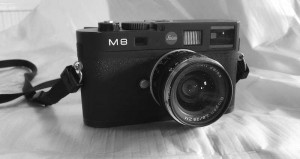The other day I happened to mention to Quentin that I found myself working more and more in B&W. “Pre- or post-processing?” he asked, clearly puzzled. As an uber-geek the idea that anyone would voluntarily throw away data seemed absurd to him. Why not capture all the colour data first and discard it later? And this does indeed seem to be the conventional wisdom in the trade.
Brooding on this later, it occurred to me that there are two separate issues here. One is technical — the irrationality of throwing away data. The other is aesthetic. My feeling is that if one is shooting ab initio in B&W it changes the whole way one looks at photographic opportunities. Some things just won’t work in monochrome (just as some scenes/subjects won’t work in colour), so if you restrict yourself to B&W then your approach to picture-taking changes. You have to make a judgement call in advance, whereas if you decide to de-saturate afterwards then you’re basically saying that colour doesn’t work for this particular image and you may as well ‘degrade’ to B&W.
LATER: Duncan Thomas pointed me at a Photoshop Tutorial which sets out one procedure for converting a colour image into B&W. About half-way through reading it, I lost the will to live (so it’s just as well that the author has produced an automated script that will do it). The tutorial begins with a quotation from Ansel Adams which suggests that the great man took the same view as I do:
“One sees differently with color photography than black and white…in short, visualization must be modified by the specific nature of the equipment and materials being used”.
I met Adams once — in the V&A of all places. He was there for the opening of an exhibition of his work. I have a vivid recollection of him surrounded by London media luvvies, towering over them and dressed in a lumberjack shirt and a very large pair of LL Bean boots.

